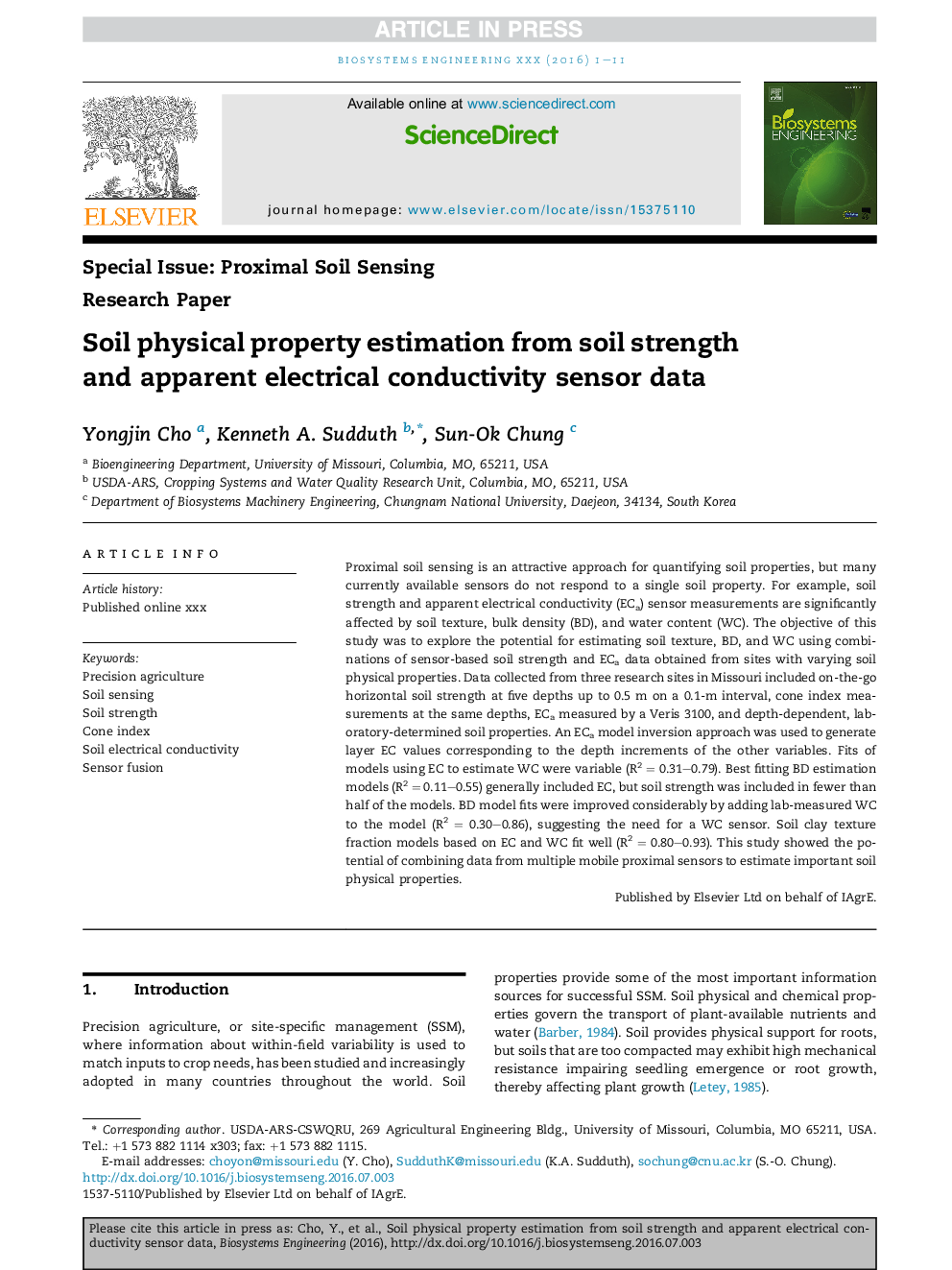| Article ID | Journal | Published Year | Pages | File Type |
|---|---|---|---|---|
| 5471962 | Biosystems Engineering | 2016 | 11 Pages |
Abstract
Proximal soil sensing is an attractive approach for quantifying soil properties, but many currently available sensors do not respond to a single soil property. For example, soil strength and apparent electrical conductivity (ECa) sensor measurements are significantly affected by soil texture, bulk density (BD), and water content (WC). The objective of this study was to explore the potential for estimating soil texture, BD, and WC using combinations of sensor-based soil strength and ECa data obtained from sites with varying soil physical properties. Data collected from three research sites in Missouri included on-the-go horizontal soil strength at five depths up to 0.5Â m on a 0.1-m interval, cone index measurements at the same depths, ECa measured by a Veris 3100, and depth-dependent, laboratory-determined soil properties. An ECa model inversion approach was used to generate layer EC values corresponding to the depth increments of the other variables. Fits of models using EC to estimate WC were variable (R2Â =Â 0.31-0.79). Best fitting BD estimation models (R2Â =Â 0.11-0.55) generally included EC, but soil strength was included in fewer than half of the models. BD model fits were improved considerably by adding lab-measured WC to the model (R2Â =Â 0.30-0.86), suggesting the need for a WC sensor. Soil clay texture fraction models based on EC and WC fit well (R2Â =Â 0.80-0.93). This study showed the potential of combining data from multiple mobile proximal sensors to estimate important soil physical properties.
Keywords
Related Topics
Physical Sciences and Engineering
Engineering
Control and Systems Engineering
Authors
Yongjin Cho, Kenneth A. Sudduth, Sun-Ok Chung,
